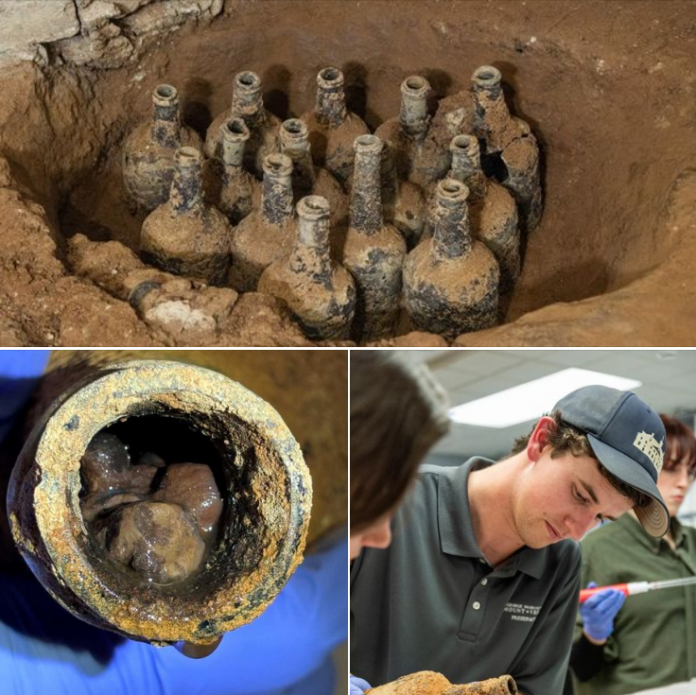The historic walls of Mount Vernon, the former home of American Founding Father George Washington, have long safeguarded the stories of the past. Recently, however, the uncovering of nearly 30 glass bottles filled with “perfectly preserved” cherries and berries beneath the floorboards has revealed an extraordinary piece of history. This remarkable discovery provides a rare window into the life and preservation methods of the 18th century.
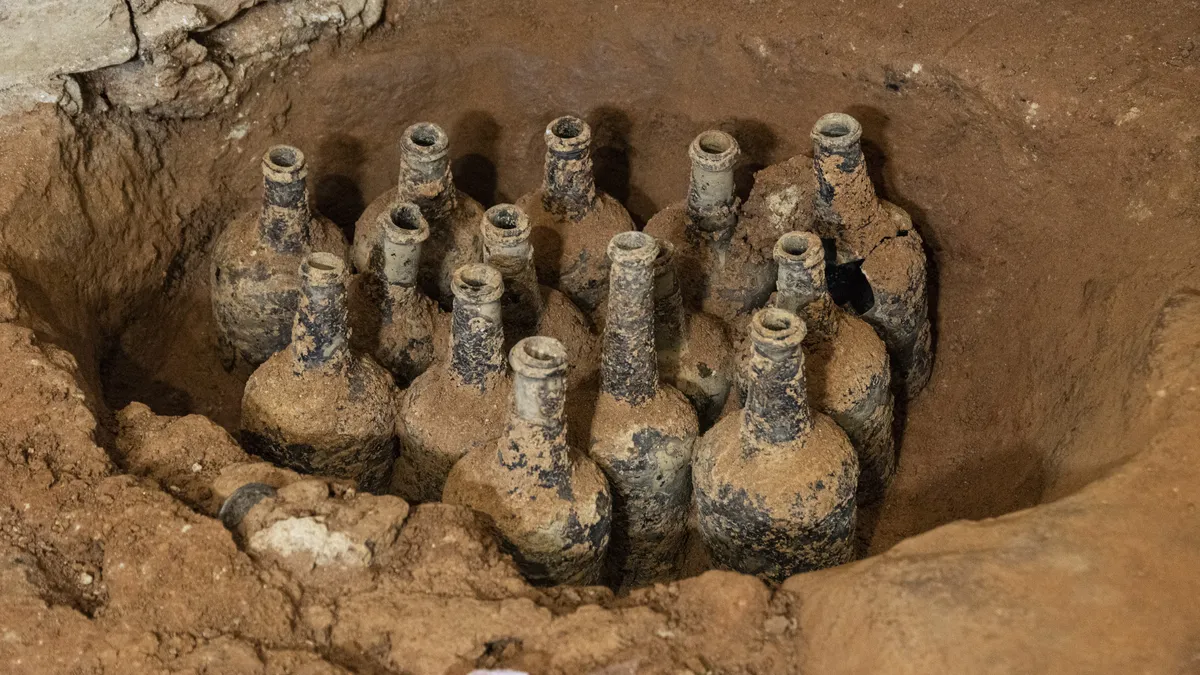
Unveiling the Past
In May of this year, archaeologists involved in the Mansion Revitalization Project—a key initiative focused on preserving this historic site—made an exciting find in the mansion’s cellar. They discovered two 18th-century bottles, still sealed and containing liquid, cherries, and pits. This initial discovery soon led to more as the team unearthed an additional 35 glass bottles from the cellar’s storage pits, with 29 of them remaining intact and still containing preserved fruit. The careful extraction of these fragile artifacts was a meticulous process, vital for ensuring their preservation.
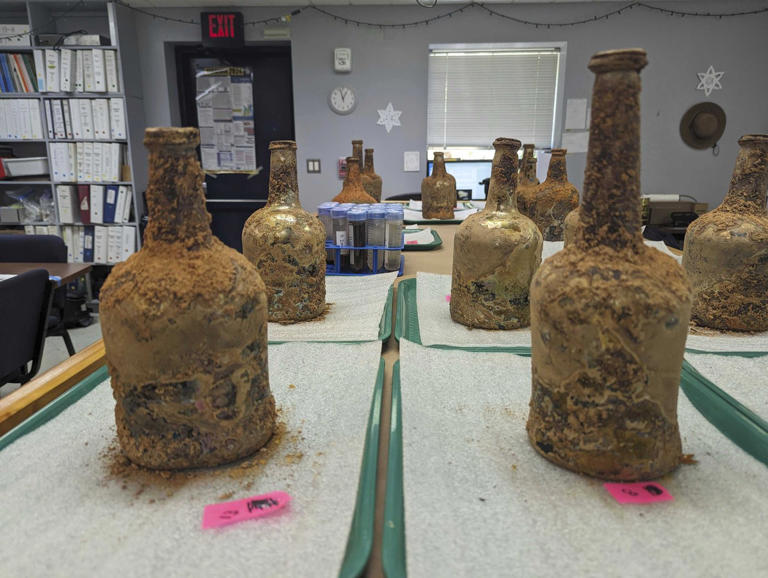
The Historical Impact
“These artifacts likely haven’t seen the light of day since before the American Revolution, possibly forgotten when George Washington left Mount Vernon to lead the Continental Army,” stated Mount Vernon President and CEO Doug Bradburn. Due to the delicate nature of these bottles, their excavation and handling required extreme care. To further explore the contents, the team at Mount Vernon has collaborated with the United States Department of Agriculture’s Agricultural Research Service.
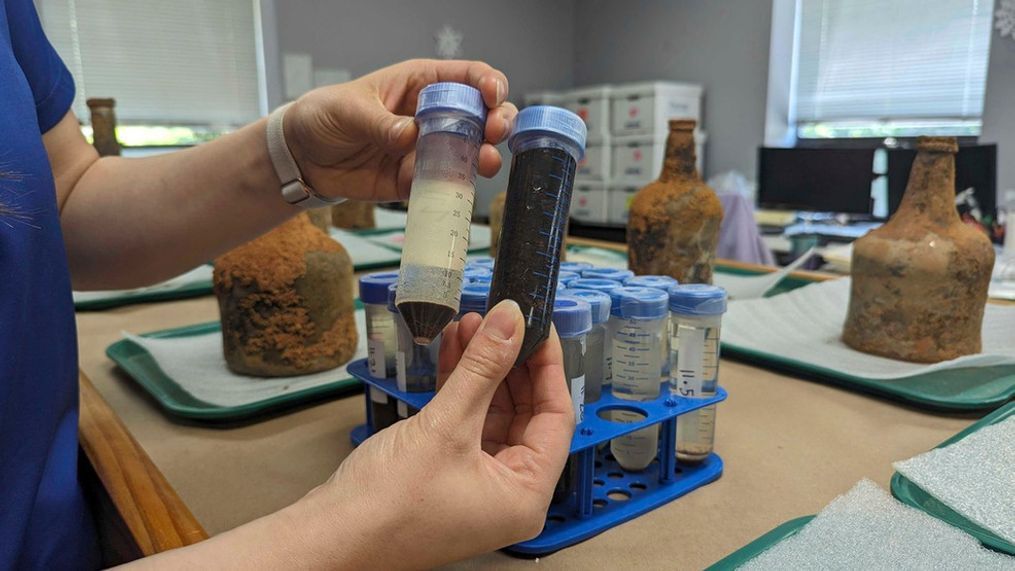
Scientific Examination
Though the investigation is still in its early stages, the team has so far identified 54 cherry pits, 23 stems, and cherry pulp, believed to be from a more acidic variety of cherries that aided in their preservation. Additionally, berries thought to be either gooseberries or currants were also found. DNA analysis is expected to determine the exact species of cherries, with the hope that the pits might eventually be used to revive this ancient fruit. However, this is a difficult task. As Victoria Meakem, a molecular biologist at the Plant Genetic Resources Unit, explained to The Washington Post: “We broke open a few pits, and they were waterlogged, so that kills the potential to germinate it. But it’s something we’ve thought about.”
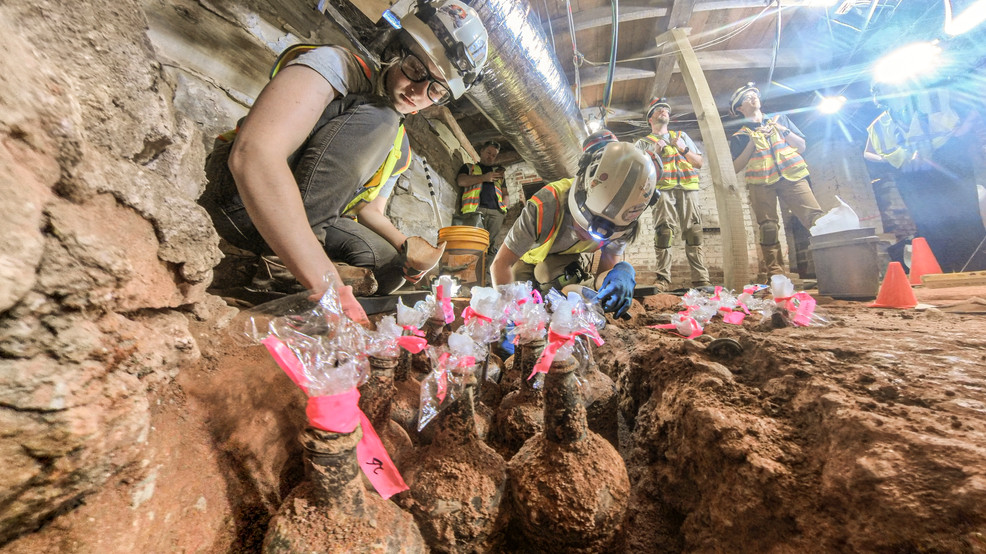
Preservation Techniques of the Era
Microscopic examination has revealed fascinating details about the harvesting of these cherries—neatly clipped from the trees with shears, leaving the stems attached. This suggests a careful and deliberate preparation process. “These perfectly preserved fruits picked and prepared over 250 years ago offer a rare opportunity to enhance our understanding of the 18th-century environment, plantation foodways, and the beginnings of American cuisine,” remarked Mount Vernon Principal Archaeologist Jason Boroughs.
A Testament to Expertise
The bottles and their contents also underscore the expertise of the enslaved individuals responsible for the careful food preparations at Mount Vernon. Boroughs added: “The bottles and contents are a testament to the knowledge and skill of the enslaved people who managed the food preparations from tree to table, including Doll, the cook brought to Mount Vernon by Martha Washington in 1759 and tasked with overseeing the estate’s kitchen.” Sadly, not everyone at Mount Vernon had the chance to enjoy this preserved fruit, as it was likely a luxury reserved for the estate’s owners.
Conclusion
The discovery of these “perfectly preserved” fruits offers an exceptional and intriguing insight into the past. It illuminates not only the preservation techniques of the 18th century but also acknowledges the expertise of the enslaved individuals who played a vital role in the operations of Mount Vernon. As the investigation proceeds, these artifacts are set to greatly enrich our understanding of early American history and the origins of American culinary traditions.



